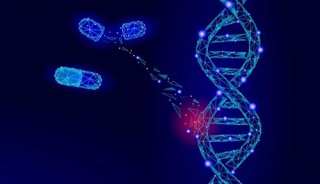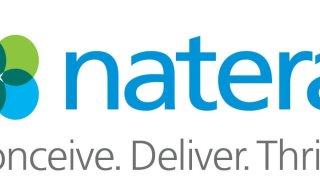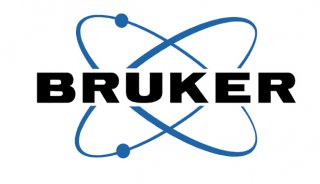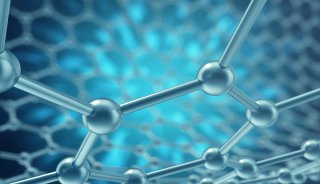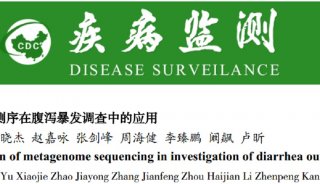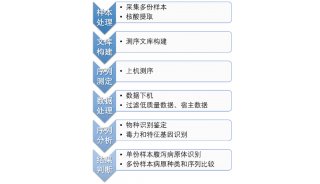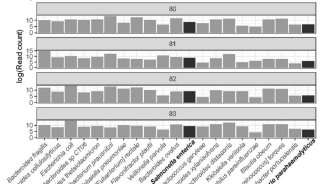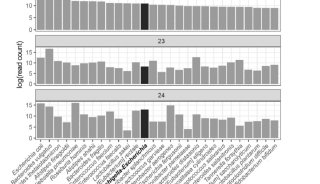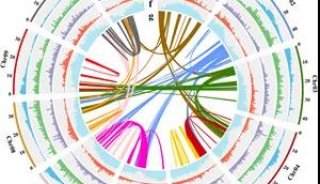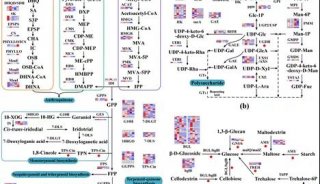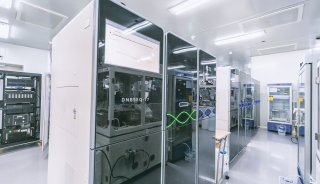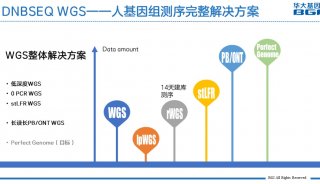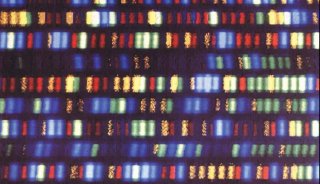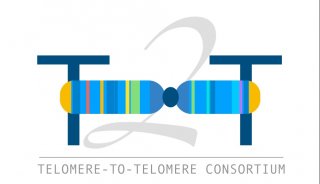全基因组的比较基因组杂交技术介绍
Whole-Genome and Custom Fine-Tiling Array CGH |
| Comparative Genomic Hybridization (CGH) measures DNA copy number differences between a reference genome and your sample genome. NimbleGen offers two high-definition array CGH products: whole-genome array CGH and fine-tiling array CGH. Whole-genome CGH measures copy number differences in DNA across entire genomes, while fine-tiling CGH determines breakpoints at ultrahigh resolution in DNA targets located in any subset of DNA (either a contiguous region or many different regions of interest). Key features of NimbleGen’s microarrays - ultra-high density and long oligo probes - yield a powerful, high-definition CGH platform for whole genome analysis. With the flexibility of NimbleGen array synthesis, chromosomal aberrations identified in whole-genome surveys can be readily examined at even higher resolution with custom fine-tiling array CGH. Such studies can map genomic changes down to the gene and even exon level and enable breakpoint mapping to less than 500 bp intervals. NimbleGen’s array CGH detects both single and multiple copy changes. |
Advantages of NimbleGen Array CGH
Highest Resolution Array CGH
NimbleGen's high capacity microarrays contain 385,000 probes on a single glass slide. This feature density enables design of a human whole genome CGH array with probes tiled through genic and intergenic regions at a median probe spacing of 6,000 bp. This tiling path array design approach ensures you get the complete picture on genome-wide copy number changes. Ultra-high resolution detection of small deletions and amplifications, as well as breakpoint mapping to less than 500 bp intervals, can be achieved using NimbleGen's fine-tiling arrays with probes as dense as 10 bp spacing.
Isothermal (Tm-Balanced), Long-Oligonucleotide Probes
NimbleGen's exclusive isothermal array design approach enables uniform probe performance, eliminating hybridization artifacts and/or bias and providing higher quality data. Probe lengths are adjusted (45mer - 85mer) to equalize the melting temperature (Tm = 76°C) across the entire set. Thus, probes are optimized to perform equivalently at a given stringency in the genomic regions your experiments require, including AT- and GC-rich regions.
Custom Array CGH
NimbleGen's highly flexible Maskless Array Synthesis technology enables rapid prototyping of new array designs. This flexibility enables cost-effective array CGH design for your organism of interest at the whole-genome level or focused on specific chromosomal regions.
Most Up-to-date Genome Build
NimbleGen CGH arrays are always current with the latest genome builds, so there’s no need to put your experiments on hold for a new array CGH design. In addition, you can continue to access array designs based on past genome data builds, which can be particularly useful for comparisons to prior studies.
Products and Services
With a capacity of 385,000 isothermal probes, NimbleGen's high-density, long oligo arrays span the entire non-repetitive regions of the human genome in a single array, tiling the full genome at a median probe spacing of 6,000 bp. NimbleGen's Human Whole-Genome Array CGH, available as a catalog design (no design fees), is a cost-effective platform for genome-wide analysis of copy number changes. Unlike other commercial whole-genome array CGH platforms, NimbleGen's Human Whole-Genome Array CGH tiles through both genic and intergenic regions of the genome, providing the most thorough, unbiased coverage available.
Human Whole-Genome Array CGH Analysis of Human Tumor Cell Line
The large array capacity (385,000 features), long oligo probes, and tiling path microarray design enables genome-wide detection of copy number changes in genic and intergenic regions.
Figure A: Whole-genome array CGH results displayed in an “all chromosomes” view in NimbleGen's SignalMap browser, which includes gene annotation with direct links to NCBI. Data are provided as General Feature Format (GFF) files for use with SignalMap and other genome browsers. [Click for SignalMap view)
Figure B: Whole-genome plot of data processed with a 50 Kb averaging window for a global view of copy number changes.
Figure C: Zoomed-in view of a region in chromosome 3 showing a single copy loss and 50 Kb microdeletion. Top track is gene annotation, middle track is averaged data with segmentation analysis (red horizontal lines demarcate copy number changes), and bottom track is individual probe data (unaveraged).
NimbleGen's Custom Fine-Tiling Array CGH can be used to detect deletions and amplifications and to map the associated breakpoints with unprecedented resolution. You can choose your region(s) of interest for a fine-tiling array design with probes spaced as dense as 10 bp. This density of probe placement enables ultra-high resolution mapping of breakpoints to an interval that can be validated by PCR amplification and sequencing. The selected regions need not be contiguous or even within the same chromosome. For example, the copy number changes identified in a whole-genome array CGH experiment can be combined and tiled at higher resolution on a Custom Fine-Tiling CGH Array.
Fine-Tiling Array CGH Analysis of Human Tumor Cell Line
Regions from four separate chromosomes were tiled at high resolution, enabling precise determination of breakpoints.Figure D: Full fine-tiling data set in SignalMap browser
Figure E: Detection of an ~80 Kb deletion
Figure F: Detection of a single-copy change breakpoint
Applications
NimbleGen array CGH is a significant advance over current array CGH methods for the detection of DNA copy number changes and mapping of the associated breakpoints. While these changes are commonly recognized as the underlying basis for many congenital disorders and complex diseases (such as cancer), variation in copy number is also commonly found between healthy individuals. Characterizing normal versus aberrant chromosomal differences will be key to understanding the molecular mechanisms for a given disease.
NimbleGen array CGH provides the highest level resolution for detecting a wide range of copy number changes on either a genome-wide or fine-tiling level, including:
Homozygous and hemizygous deletions
Single and multiple copy amplifications
Unbalanced translocations
NimbleGen Service Overview
NimbleGen's CGH microarray service consists of the following steps:
Customer and NimbleGen create custom array design, and NimbleGen manufactures the array.
Customer supplies 1-3µg purified, undegraded sample and reference genomic DNA (reference optional).
NimbleGen labels the sample, performs the CGH hybridization, scans the array, extracts the data, and performs the segmentation analysis.
Data Delivery
The data delivered with NimbleGen's CGH service includes:
Raw data
Segmentation analysis based on the DNACopy package
Segmentation GFF file
Genome annotation GFF file
SignalMap™ GFF visualization software
Data sets are provided in GFF file format for easy data set analysis with the SignalMap™ data browser software. SignalMap displays the segmentation analysis in relation to the known state of sequence annotation, including genes, exons, and repetitive elements.
NimbleGen Array CGH General Specifications
CGH Array Specifications | |||
| Probe length | Isothermal (Tm=76°C, 45mer - 85mer) | ||
| Probe design format | Tiled throughout genome on forward strand. Repeat sequences masked. | ||
| Total features | 385,000 | ||
| Feature Size | 16um x 16um | ||
| Array size | 17.4mm x 13mm | ||
| Slide size | 1" x 3" (25mm x 75mm) glass | ||
| Sample required / array | 1 - 3µg isolated gDNA test sample 1 - 3µg isolated gDNA reference sample | ||
| Sample labeling | 2 color (Cy3 and Cy5) | ||
| Sequence source | UCSC Genome Browser - http://genome.ucsc.edu/ | ||
| Deliverables | Raw and processed data, segmentation analysis, SignalMap™ data browser | ||
Whole Genome CGH Arrays | |||
| Available Genomes | Human Tiled Whole Genome | Mouse Tiled Whole Genome | C. elegans Tiled Whole Genome |
Genome Build | HG17 | MM5 | ce2, WS120 |
| Median Probe Spacing | 6000 bp | 5000 bp | 140 bp |
Probe Length | isothermal probes: Tm 76 C, length 45-85 bp. | ||
Fine-Tiling CGH Arrays | |||
Available Genomes | Human CHR X Fine-Tiling | HG17 | |
| Median Probe Spacing | 106 bp | ||
| Probe Length | . | isothermal probes: Tm 76 C, length 45-85 bp | |
Custom Fine-Tiling CGH Arrays | |||
| Available Genomes | Any genome for which high-quality sequence is available. | ||
| Median Probe Spacing | Researcher Specified from 10bp to 5000bp | ||
| Bioinformatics | Custom array design available for an additional fee | ||
| Resolution | Custom tiling up to 385,000 probes per array. Single or multiple chromosomal regions per array. Single or multiple array designs. | ||
CGH Product Literature
CGH Datasheet - (pdf, 1010KB)
-
企业风采
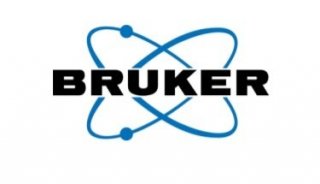
-
企业风采

-
企业风采

-
焦点事件

-
科技前沿

-
项目成果

-
科技前沿

-
企业风采
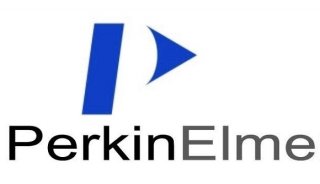
-
焦点事件

-
科技前沿
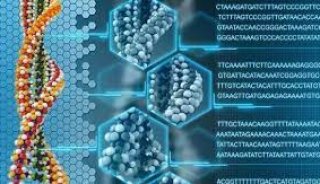
-
焦点事件

-
科技前沿

-
焦点事件

-
科技前沿

-
科技前沿

-
并购

-
科技前沿

-
科技前沿

-
科技前沿
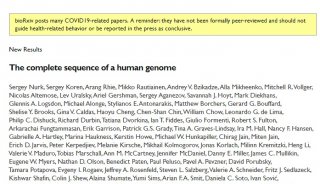
-
科技前沿

-
科技前沿
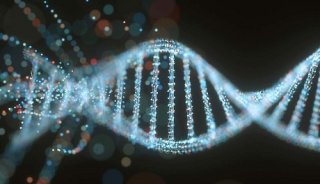
-
科技前沿

-
项目成果
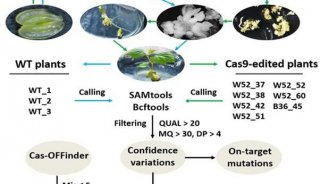
-
焦点事件

-
项目成果

-
焦点事件

-
焦点事件

-
项目成果
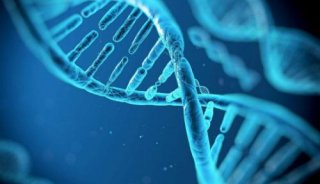
-
综述

-
综述

-
焦点事件

-
焦点事件

-
项目成果
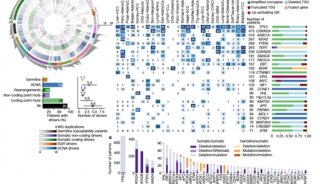
-
企业风采

-
焦点事件
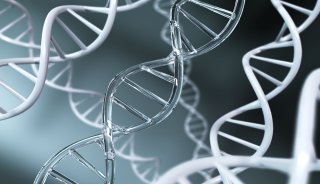
-
项目成果

-
焦点事件
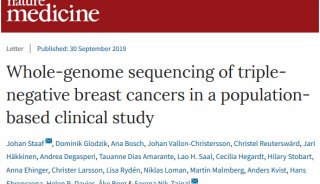
-
项目成果
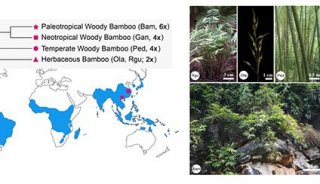
-
焦点事件
